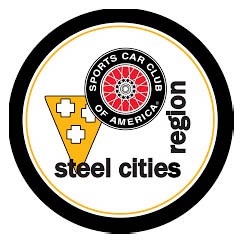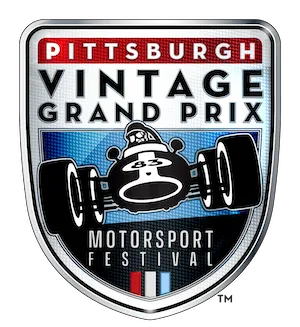Steel Cities Region SCCA
Formed in 1944, the Sports Car Club of America is a national group of automobile enthusiasts who have banded together, 60,000 strong, to help support their love of racing.
The Steel Cities Region plays a pivotal part in the success of the PVGP. Its members represent the leadership of our race volunteers as well as the majority of our race side volunteer team. They are acknowledged nationally for their role in staging the country’s largest and longest-running race on actual city streets.
The Steel Cities Region comprises the area around Pittsburgh and includes Pittsburgh International Race Complex – their home track. They are dedicated to providing a safe and fun venue for Motorsports and they take great pride in being active since the 1950s.
The Steel Cities Region SCCA invites you to come out and play, as a driver or as a volunteer. You will find a mixed group of people that all have one thing in common – HAVING FUN WITH CARS! Learn more here
Inside PVGP Raceside Operations
By Jeff Hutzelman Steel Cities Region SCCA membership chairperson
Have you ever wondered what it takes to put on a race like the Pittsburgh Vintage Grand Prix, or who all those people are on the other side of the fence and what exactly are they doing? Maybe you’ve wondered what drives anyone to stand out in the hot sun, or pouring rain, all weekend. Or perhaps you’re thinking about how you could get closer to the action by joining them. They are our race side volunteers, a dedicated group of 400 individuals that plan, stage and run the largest vintage race event in the country. Here’s the inside story of what they do and how you can join them.

Flaggers
The most visible volunteers on our racecourse are the Corner Marshals, also known as Flaggers who are stationed at 20 corners along the course to alert drivers of changing conditions on the track. They are placed so that at least one flag station can be seen from every part of the track. This allows them to be Race Control’s “eyes and ears” on the course, reporting incidents, requesting assistance, and relaying instructions to drivers by displaying the appropriate flags.
Starters
Starters are responsible for displaying the well-known green and checkered flags, but also for much more. It’s the starters who keep track of both the current leader and the number of laps completed, which allows them to know not only when to wave the checkered flag, but for whom. Starters may also display flags to call particular cars into the pits due to rules violations or mechanical problems.
Race Control
Race Control, located at the start/finish line, is the nerve center of the race operation. The communicator is the radio voice of race control, who receives reports from flag stations, issues instructions, manages the radio traffic, and keeps track of what is going on at any given time on the track. Stewards are responsible for making decisions about what is happening on the track, enforcing the rules, and insuring the safety of all participants.
Radio
Amateur Radio operators, (typically known as ‘hams’) licensed by the Federal Communications Commission, provide radio communications between Race Control, flag stations, and other key locations on our Schenley Park course. When the PVGP first began back in 1983, Amateur Radio provided a necessary substitute for the wired intercom systems in use at more traditional tracks. Today, while other tracks have switched to commercial radio systems, our hams continue to provide reliable communications despite the challenging terrain of Schenley Park.
Course Crew
Emergency Services volunteers are trained in medical response, fire fighting, and vehicle recovery. They’re staged at various points along the course, ready at any moment to respond to emergencies, remove disabled vehicles, and return the course to a safe condition, often with little or no disruption to the ongoing race. Our volunteers affectionately refer to themselves as the “coarse crew”.
Timing & Scoring
During Saturday’s practice and qualifying runs, times are used to determine grid positions for Sunday’s races. On Sunday, Timing & Scoring keeps track of both times and places so that scores may be given to each driver in both his car class and in the overall race finish. This is accomplished using a combination of computer systems with radio transponders and a traditional manual system utilizing time cards, stopwatches, and a “lap chart” which shows the position of every car on every lap of the race.
Paddock
Volunteers in the Paddock begin working as early as Thursday and then through the weekend, setting up the paddock, organizing race cars, making sure the area is safe, and directing cars from the paddock to the grid and back.
Grid
Officials on the Grid ensure that cars are in the proper order according to their qualifying times, check that each car has been inspected and that the driver is registered, and perform last-minute safety checks such as verifying that gloves, helmets, and restraints are in use where required.
Pit Marshals
Pit Marshals are responsible for controlling traffic in the pits and in pit lane, and ensuring the area is safe. They direct cars coming in off the track to the proper location and directing drivers wanting to go back out onto the track.
Registration
Volunteers at Registration handle check-in of all drivers, crew, and race officials. They keep a list of everyone who is participating in the event, including emergency contact information, and issue the wristbands and credentials that allow access to the track and support areas. The Chief Registrar works for months prior to the event getting competitors entered into race groups, preparing for on-site registration, and preparing data for Timing and Scoring.
